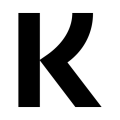Swedish fintech company Klarna, one of the giants of the fast-growing BNPL industry,5 had been gearing up for an IPO in the U.S. by filing its Form F-1 with the SEC in March.6 However, those plans have been put on hold indefinitely, following tariff-induced market volatility.7
Specifically, Klarna paused its IPO plans just two days after President Donald Trump's April 2nd announcement of reciprocal tariffs, which triggered a sharp stock market selloff.8 Klarna had reportedly been planning to start marketing its IPO shares that following Monday,9 in a deal that could have valued the company at around $15 billion.10
Now, however, it remains unclear if/when Klarna will resume its IPO plans, especially with other highly anticipated IPO candidates like StubHub delaying going public.11
Klarna: Company background
While BNPL often feels like a hot new category, Klarna has been in the game for around two decades. The company started in Stockholm in 2005 under the name Kreditor, before rebranding as Klarna in 2010. The company has 93 million active consumers across 675,000 merchants in 26 countries as of the end of 2024.12
Klarna’s CEO Sebastian Siemiatkowski is one of the company's three co-founders, along with Niklas Adalberth and Victor Jacobsson, though only Siemiatkowski remains at Klarna at this time. However, Jacobsson had been buying up Klarna shares in 2024, ahead of a potential Klarna IPO, possibly to the point of exceeding Siemiatkowski’s stake. As the Financial Times reported, Jacobsson had been using special purpose vehicles to acquire Klarna shares, using his right of first refusal (ROFR) to step in as a buyer.13
In Klarna's F-1, Jacobsson is listed in Klarna's as a 5% or greater shareholder, owning over 31 million shares, and Siemiatkowski is listed as a principal selling shareholder but with an undisclosed number of shares.14
BNPL growth amidst high interest rates
Klarna’s core business is currently in the BNPL market, with nearly two-thirds of its 2024 revenue coming from retail partner fees.15 Like with credit cards, merchants are often willing to pay transaction fees to Klarna due to the potential for the BNPL financing method to attract customers.
Year-over-year, Klarna grew revenue around 24% in 2024 to reach over $2.8 billion. Klarna also reached net profitability of $21 million in 2024, compared to a $244 million loss in 2023.16
These improvements have come amidst high interest rates, which can provide both headwinds and tailwinds. Many BNPL options, including Klarna’s core offering, do not charge interest if payments are made on time, so that could be appealing to some consumers compared to high credit card rates, for instance.17
However, high interest rates and inflation can also threaten areas like consumer spending and potential credit losses if users do not pay back BNPL financing.18 Higher interest rates can also affect the ability of companies to invest in innovation.19
For 2024, Klarna experienced an uptick in consumer credit losses, hitting $495 million, up from $353 million the year before.20
These trends could be exacerbated by the recent economic volatility brought about by tariffs. If tariffs increase prices, that could cause more consumers to rely on financing options like BNPL.21 At the same time, consumers may struggle to repay this financing, especially with sticky inflation causing interest rates to remain elevated.22
Even before tariffs, though, these issues help explain why Klarna and other fintech companies struggled with valuations in recent years, such as with the Financial Times reporting in 2022 that “with inflationary pressures increasing, investors have soured on growth-chasing fintechs, which have suffered an even steeper decline than any other technology sector."23
That said, Klarna could potentially tap into several positive trends to further improve its position, such as by leveraging generative AI more. The company has been using AI to improve profitability, such as through integrations with ChatGPT to handle customer queries.24
New revenue opportunities include offerings such as Klarna Plus, a subscription service that helps users avoid service fees at retailers where Klarna is not accepted.25 Klarna has also expanded its business into other areas of fintech recently, such as by launching a Klarna-branded credit card in the U.S. that offers consumers flexible payment options.26
Klarna stock price history
Klarna’s Forge Price is $37.31, a 58.6% increase from April 2024.27 Forge Price is a derived data point that reflects the up-to-date price performance of venture-backed, late-stage companies, and is calculated based on a proprietary model incorporating pricing inputs from primary funding round information, secondary market transactions, and indications of interest (IOIs) on Forge.
Klarna's recent rise marks somewhat of a recovery from its peak valuation in 2021, followed by a steep drop. This volatility somewhat mirrors the trend that's occurred in the broader Forge Private Market Index, which has gained around 38% over the past year, following a rough 2022.28
Klarna funding history and private market valuation
Klarna has raised a total of $4.5 billion over 32 funding rounds.29 The company has a long history of private market funding, such as with its Series A announced back in 2007.30
Klarna's most recent reported valuation of around $14.6 billion comes from its investor Chrysalis marking up its holding in 2024, based on share price gains from similar companies Affirm and PayPal, according to Bloomberg.31 Yet it’s still far below the fintech company’s peak, when it hit a $45.6 billion post-money valuation in 2021.32
Some of Klarna’s top investors include Sequoia Capital, Silver Lake, Mubadala Investment Company, and the Canada Pension Plan Investment Board, to name a few. Klarna has also raised money from retailers such as H&M and Macy’s.33
Looking ahead
While it's unclear at this time how long the Klarna IPO will remain paused or if it will be resumed at all, much likely depends on how stock market volatility and economic conditions progress in 2025.
Check back here or take a look at Forge’s upcoming IPO calendar to stay in the loop about the Klarna IPO and other pending public offerings.
If you’re interested in investing in private companies like Klarna, read more about pre-IPO investing or register on Forge marketplace today to get started.





